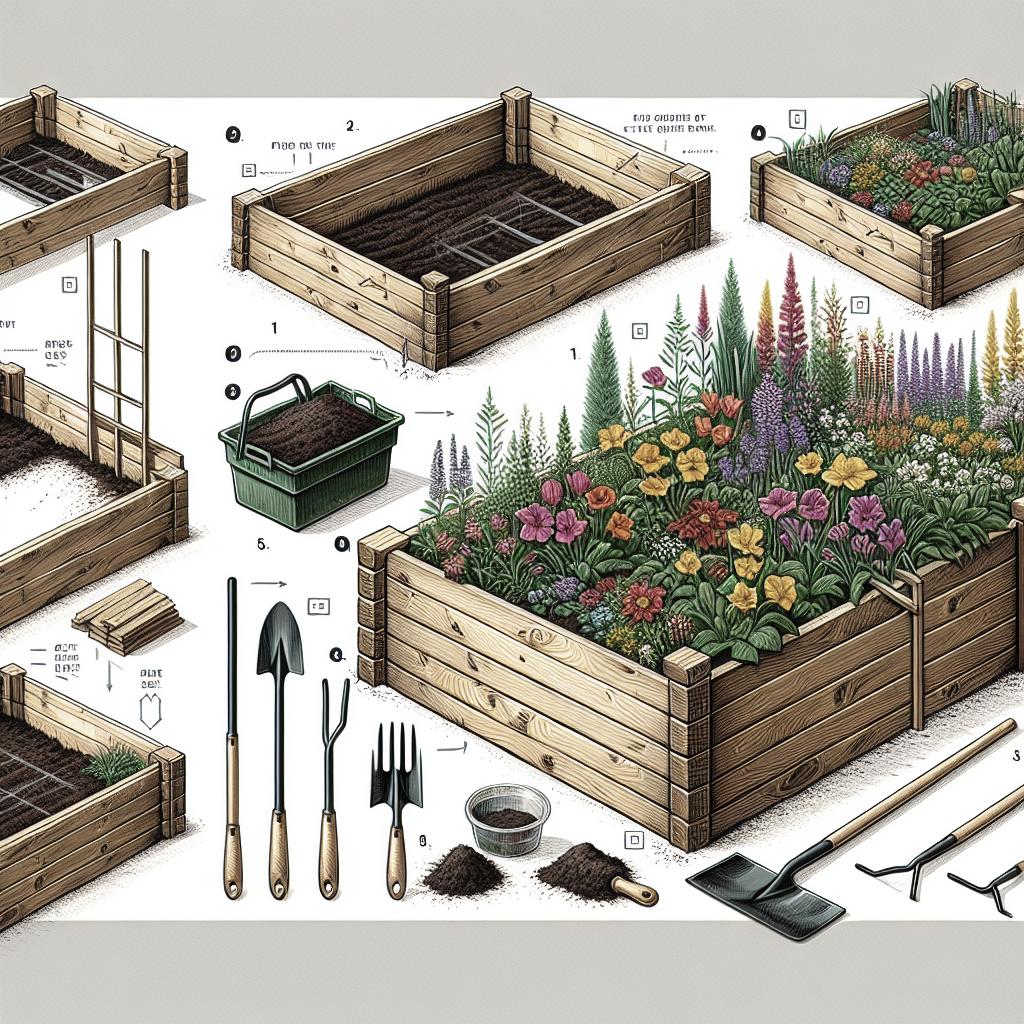“`html
How to Make a Homemade Hammock
Hammocks are the perfect blend of relaxation and utility, offering a slice of paradise whether you’re lounging in the backyard or camping under the stars. Making a hammock at home offers personalization, allowing you to tailor it to your style and comfort needs. This guide walks you through what to consider before making your hammock, and provides twelve creative DIY projects addressing different preferences and styles. From discovering your drop zone to crafting a hammock chair, you’ll find a method that suits your setup perfectly. We’ve also included tips on standalone hammock stands for added ease. Dive into our hammock-making journey and create the ultimate hangout spot.
Share
Crafting your own hammock is an exciting adventure. Sharing the joy of creation not only inspires others but also provides a foundation for new ideas and styles. Everyone loves a cozy spot for relaxation, and a custom hammock can be a central piece in your outdoor area or even inside your home.
Encourage friends to join the hammock-making process, or explore online communities where DIY enthusiasts share designs, advice, and innovative takes on home-crafted hammocks. Sharing your work online not only showcases your creativity but also builds a community passionate about comfort and craftsmanship.
What to Consider Before You Make a Hammock
Before embarking on your DIY hammock journey, a few things need consideration. Firstly, think about the location where you’ll hang the hammock—this affects the materials and design. Will it be placed outdoors or indoors? This decision greatly influences the type of fabric and support you’ll need.
Additionally, consider the weight capacity and durability required for your hammock. The right materials ensure safety and longevity, providing peace of mind when relaxing. Fabric choices, hardware, and the strength of fixing points all play vital roles. Lastly, decide on the style and comfort level desired—some people might prefer the classic fabric hammock, while others could lean towards rope or net designs for that airy feel.
1. Drop Zone
Identifying your ideal ‘drop zone’ is the first step in creating the perfect hammock atmosphere. This involves selecting a location that meets your relaxation needs while offering safety and practicality. Outdoor or indoor, finding the right spot takes measurement and vision.
Check for sturdy anchor points like trees or walls that can support your weight. Take into account the view, shade, and proximity to amenities like light or outlets for added convenience. A hidden area in the backyard, a corner in your living room, or even a sunny porch could all serve as excellent drop zones for your homemade hammock.
2. Sail Away
Channeling the essence of sea breezes and maritime bliss, a sail-inspired hammock can add a unique nautical vibe to your space. This design employs durable, water-resistant fabrics similar to those utilized in the sails of ships, ensuring longevity and a lightweight feel.
This project requires sewing and a keen eye for materials that withstand outdoor elements. Additionally, incorporating a loop or grommet system can enhance strength and support. Picture yourself gently swaying on a hammock reminiscent of a sail lulling through ocean winds—a serene visual that enriches any outside area.
3. Float On
Emulating the buoyancy of floating, a ‘float on’ hammock symbolizes ultimate relaxation. This version utilizes soft, pliable fabrics that contour to your shape and sway with the lightest of breezes.
The interplay of fabric and space elevates this design by using snug yet breathable materials—think parachute silk or mesh—with an emphasis on ease of setup and portability. This hammock is a great choice for those who love camping or changing their lounging location, adapting seamlessly from a backyard tree to a lakeside hangout.
4. Here’s a Hammock Idea: Rip It
The ‘rip it’ hammock embraces a casual, rustic aesthetic. This DIY project involves using repurposed or naturally torn fabrics, ideal for creating a bohemian, relaxed look without the need for perfection.
Combining old textiles or denim, or exploring thrift stores for colorful patchworks can yield spectacularly creative hammocks. The essence lies in celebrating the raw and crinkled textures, providing a distinctly personal and eclectic vibe for anyone who lounges within.
5. Beckon the Beach
Inspired by sandy shores and sunlit breezes, the ‘beckon the beach’ hammock is all about bringing coastal tranquility into your backyard. Utilizing light, breezy fabrics in beachy tones, this hammock style sets the perfect tone for summer relaxation.
Incorporating elements like fringes or decorative knots mirrors the essence of beach decor, harmonizing with natural elements like sand or seashells. Aim for materials that dry quickly and can resist sun damage, ensuring your hammock stays vibrant and inviting longer.
6. DIY Hammock Bedsheet
The versatility of a spare bedsheet makes it a fantastic element for a makeshift hammock. This straightforward project involves minimal sewing and creativity, providing comfort and ease for DIY enthusiasts.
With nothing more than a sturdy bedsheet and strong ropes or hooks, you can assemble a hammock in no time. This design, perfect for quick setups indoors, adds a casual, cozy ambiance to any room, while its simplicity speaks volumes in terms of utility.
7. Backyard Bohemian Homemade Hammock
Embrace bohemian chic with this backyard hammock idea. Colors, patterns, and unique textures define this style, empowering you to express individuality through fabric choices and adornments.
Use macrame techniques, vibrant tassels, or patchwork quilts and personalize with accents like beads or feathers. This approach invites a touch of whimsy, creating an outdoor retreat brimming with personal character and an artistic touch.
8. Jump Into a DIY Hammock Swing
The hammock swing offers a fun twist on traditional hammock lounging, perfect for adding a playful vibe to your space. Swings can be great for relaxation and a gentle rocking motion.
Create a sturdy framework using durable fabric and dependable attachments, ensuring safety while enjoying its soothing motion. Add a few comfortable cushions, and you’ve transformed an ordinary hammock experience into a lively and dynamic retreat.
9. From Protection to Relaxation
Originally, hammocks were used as a protective, safe sleeping method. Modern takes transform them into objects of relaxation and luxury, retaining that original ingenuity.
Drawing from the hammock’s history, choose durable, breathable fabrics. Designs inspired by indigenous cultures can inject a sense of tradition and craftsmanship still valued today, offering protection from the elements intertwined with leisurely comfort.
10. I Kid You Knot
Explore the art of knotting with a ‘I kid you knot’ hammock, combining functionality with a visually striking pattern. Different knots can ensure stability, while also creating an intricate netting structure that supports and comforts.
Macrame and other textile arts appear here, where loops and ties are dedicatedly placed to accommodate weight distribution, resulting in an artful project with a delightful tactile quality.
11. Double Up on Layers
Adding extra layers to your hammock can increase its durability and comfort, creating a cozy enclosure that offers warmth against evening chills. Double-layered hammocks also provide greater relief through added cushioning.
Experiment with combining fabrics and textures, with the options ranging from soft fleece inners to robust, weather-resistant outers. Layered hammocks evoke luxurious comfort, making them a valued addition to family gatherings or leisurely afternoons.
12. Make a Hammock Chair
Why not create a hammock chair to enjoy a comforting upright seated experience? This project offers flexibility, allowing for compact yet comfortable relaxation spots both indoors and outside.
Hammock chairs require fewer materials than typical hammocks and can be placed anywhere within reach of a sturdy support. Fast, easy projects like this capture convenience without sacrificing comfort, making them attractive alternatives to traditional chair choices.
Also Consider: Hammock Stands
If anchoring your hammock poses a challenge, a standalone hammock stand is a reliable solution. These stands offer mobility and adaptability for your leisure needs, free from reliance on natural anchor points or structures.
Markets provide a vast array of brands and designs in both wood and metal, fitting different aesthetics and spaces. Select a model that meets the size and weight requirements specific to your hammock design, and you’ll unlock endless lounging possibilities anywhere you desire.
Final Thoughts
| Subheading | Description |
|---|---|
| Share | Importance of sharing hammock-making experiences for inspiration and community building. |
| What to Consider Before You Make a Hammock | Location, weight capacity, style preferences, and material choices influence hammock creation. |
| Drop Zone | Finding a perfect spot with sturdy support is crucial for hammock setup. |
| Sail Away | Using water-resistant materials inspired by sails for a nautical hammock design. |
| Float On | Select lightweight, contour-friendly fabrics for a buoyant hammock experience. |
| Here’s a Hammock Idea: Rip It | Embrace rustic aesthetics with repurposed fabrics for a personal touch. |
| Beckon the Beach | Bringing coastal vibes using light, breezy tones and decor elements. |
| DIY Hammock Bedsheet | Creating a hammock using basic home textiles for ease and comfort. |
| Backyard Bohemian Homemade Hammock | Employ vibrant patterns and decorations for a bohemian style hammock. |
| Jump Into a DIY Hammock Swing | Create a playful, dynamic relaxation spot with a hammock swing design. |
| From Protection to Relaxation | Utilizing historical designs and robust materials for both protection and leisure. |
| I Kid You Knot | Using knotting techniques to design a stable, attractive hammock structure. |
| Double Up on Layers | Adding layers for warmth and comfort, enriching the hammock experience. |
| Make a Hammock Chair | Crafting a hammock chair for convenient, compact relaxation. |
| Also Consider: Hammock Stands | Exploring hammock stands for versatility and ease of setup. |
“`


